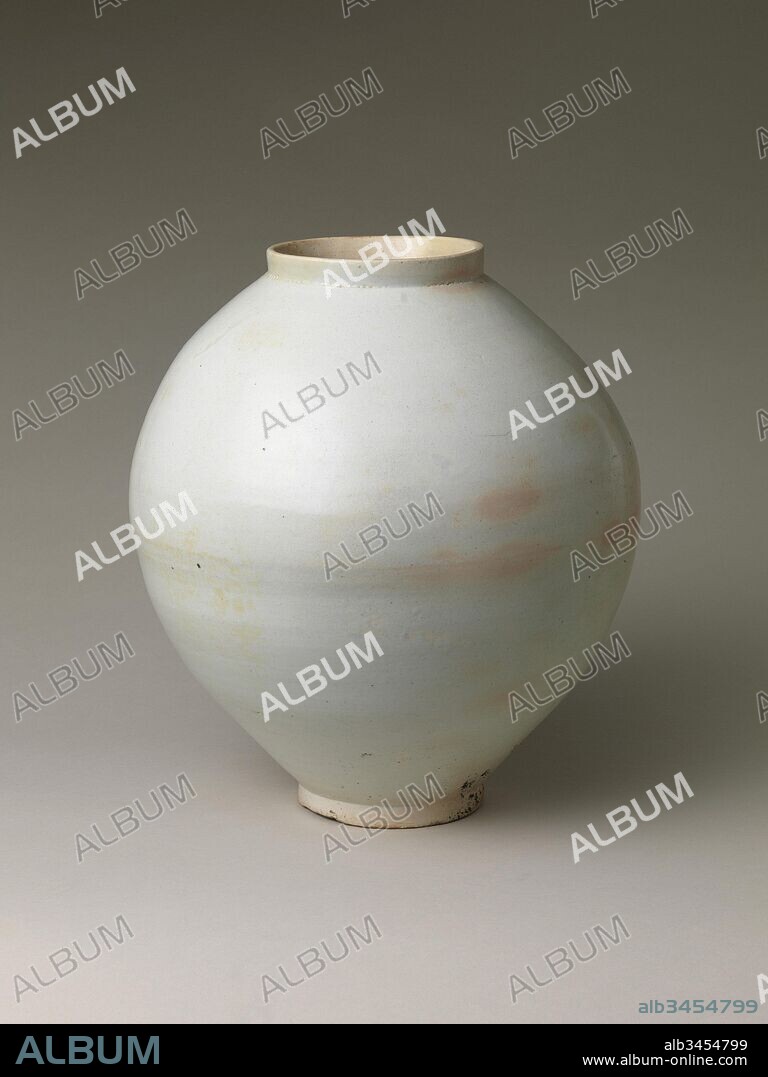alb3454799
?? ???? ??, ??? ??, Moon Jar, Joseon dynasty (1392–1910), second half of the 18th century, Korea, Porcelain, H. 15 1/4 in. (38.7 cm); Diam. 13 in. (33 cm); Diam. of rim 5 1/2 in. (14 cm); Diam. of foot 4 7/8 in. (12.4 cm), Ceramics, A distinctive type of porcelain from the late Joseon period, the moon jar (Korean: dalhangari)—so called because of its evocative form—was usually made by joining two hemispherical halves. The peach hue of the glaze, unintentionally acquired during firing, adds to the charm of this jar.

|
Añadir a otro lightbox |
|
Añadir a otro lightbox |



¿Ya tienes cuenta? Iniciar sesión
¿No tienes cuenta? Regístrate
Compra esta imagen

Descripción:
Ver traducción automática
?? ???? ??, ??? ??, Moon Jar, Joseon dynasty (1392–1910), second half of the 18th century, Korea, Porcelain, H. 15 1/4 in. (38.7 cm); Diam. 13 in. (33 cm); Diam. of rim 5 1/2 in. (14 cm); Diam. of foot 4 7/8 in. (12.4 cm), Ceramics, A distinctive type of porcelain from the late Joseon period, the moon jar (Korean: dalhangari)—so called because of its evocative form—was usually made by joining two hemispherical halves. The peach hue of the glaze, unintentionally acquired during firing, adds to the charm of this jar
Crédito:
Album / quintlox
Autorizaciones:
Modelo: No - Propiedad: No
¿Preguntas relacionadas con los derechos?
¿Preguntas relacionadas con los derechos?
Tamaño imagen:
3901 x 5200 px | 58.0 MB
Tamaño impresión:
33.0 x 44.0 cm | 13.0 x 17.3 in (300 dpi)
 Pinterest
Pinterest Twitter
Twitter Facebook
Facebook Copiar enlace
Copiar enlace Email
Email
